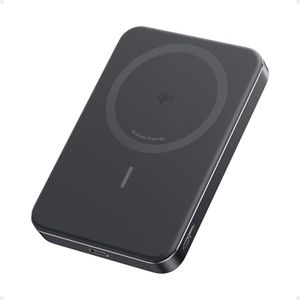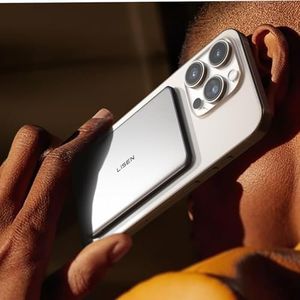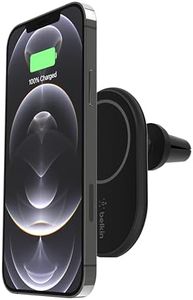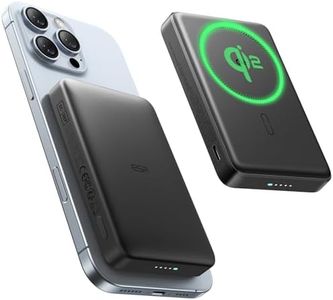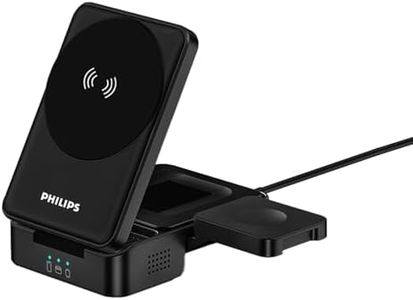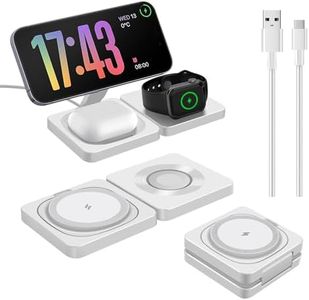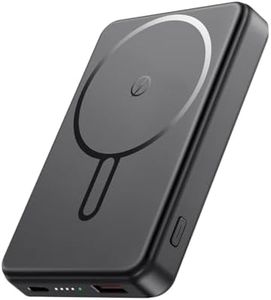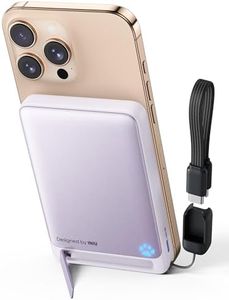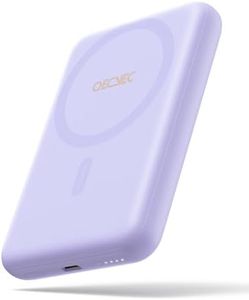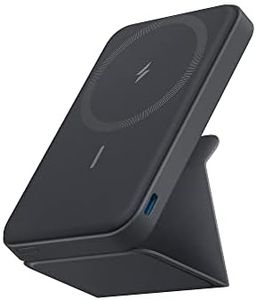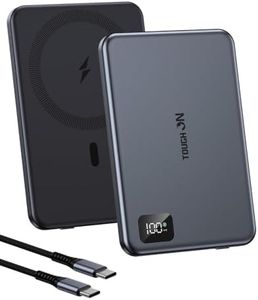We Use CookiesWe use cookies to enhance the security, performance,
functionality and for analytical and promotional activities. By continuing to browse this site you
are agreeing to our privacy policy
10 Best Portable Wireless Charger
From leading brands and best sellers available on the web.Buying Guide for the Best Portable Wireless Charger
Choosing a portable wireless charger is all about ensuring convenience and compatibility with your devices while having enough power to last when you're away from an outlet. These chargers allow you to charge your phone or accessories without cables, making them useful for travel, commutes, or just everyday life. To make the right choice, think about how and where you'll use it—consider your typical device lineup and whether you need something ultra-lightweight or more powerful for multiple charges.Battery Capacity (mAh)Battery capacity, measured in milliampere-hours (mAh), tells you how much charge the power bank can store. The higher the number, the more times you can recharge your device before the portable charger itself needs recharging. Small capacities (like 5,000 mAh or less) are light and pocket-friendly, suitable for one full phone charge or to top up accessories like earbuds. Medium capacities (10,000–15,000 mAh) allow for two to three phone charges or the ability to share with a friend. High capacities (20,000 mAh and above) offer multiple phone recharges or can serve tablets, but they're heavier and bulkier. Choose based on your typical usage—if you're out all day without access to outlets, a larger capacity is helpful; if you only need a quick emergency boost, a smaller one suffices.
Wireless Output Power (Wattage)Wireless output power, measured in watts (W), tells you how fast your device will charge wirelessly. Most wireless chargers are between 5W and 15W. 5W is slower, suitable for overnight charging or when time isn’t a concern. 10W is the common standard for many modern phones and provides a good balance of speed and safety. 15W is ideal if your device supports faster wireless charging, allowing you to top up more quickly during a short break. Check your device’s compatibility and use case—if you want fast top-ups between meetings, higher wattage is better; if you plug in your device overnight, speed may matter less.
Portability (Size & Weight)Portability refers to the size and weight of the charger, which determines how easy it is to carry with you. The slimmest models easily fit in pockets or small bags, but may offer less battery capacity. Larger, heavier options provide more power but can be bulky in a purse or pocket. Think about how often you’ll carry it—for everyday use or commuting, compactness is key; for travel or long days out, a slightly larger model might be worthwhile.
Device CompatibilityNot all portable wireless chargers work the same way with every device. Most use the Qi wireless charging standard, which covers most modern smartphones and accessories, but some older devices might be incompatible. Always check if your device supports Qi wireless charging—if not, you’ll need to use wired charging. Also, consider if you want to charge wireless earbuds or smartwatches, as some chargers have special pads or zones for this.
Extra FeaturesPortable wireless chargers sometimes include useful extras like built-in stands (to prop your phone), additional USB ports (for wired charging at the same time), digital displays (to show battery level), or pass-through charging (allowing you to charge your phone and the power bank together). Decide if these features match your preferences—if you value simplicity, basic models are fine; but if you want versatility, these additions can make charging more convenient.
Safety FeaturesSafety features, such as overcharge protection, temperature control, and short-circuit prevention, help protect both your devices and the charger itself. These are especially important if you plan to use the charger frequently or while sleeping. Look for mention of these protections to ensure peace of mind and the longevity of your devices.



